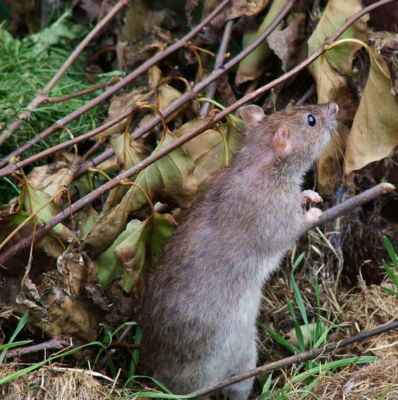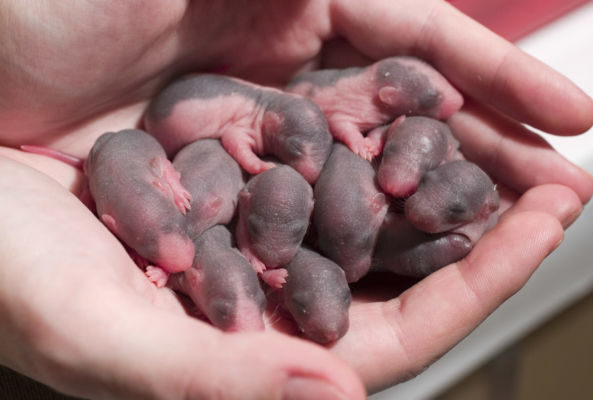Rats are a uniquely serious problem on islands such as New Zealand where there has been a rodent-free evolution of our wildlife and plantlife, but scientists around the world are also looking for better ways to control rats because of their disease-carrying and food-spoilage attributes.

Black (ship) rats with their tree-climbing abilities are New Zealand’s most common and problematic rat. Brown (Norway) rats, which are also found in New Zealand, are, however, the most common rats worldwide and are frequently the subject of research.
Some intriguing techniques are being tried internationally, to overcome rats’ natural avoidance of newly placed traps in their territory and so lure those rats to their doom.
Stephen Takacs, Regine Gries, Huimin Zhai and Prof. Gerhard Gries (all from Department of Biological Sciences, Simon Fraser University, Burnaby, British Columbia, Canada), recently published a paper in Angewandte Chemie reporting their experiments at using sex attractant pheromones from male brown (Norway) rats in a lab setting to attract wild female brown rats. Male rats use urine to mark their territory, to deter rival males, retain resident females and attract new females in.
“Collecting urine- and faeces-soiled bedding material of laboratory-kept rats and comparing the soiled-bedding odorants of juvenile and adult males, as well as of adult males and females, we found nine compounds that were specific to, or most prevalent in, the odor profiles of sexually mature adult males.”
They then created a synthetic blend of those compounds and tested the response of both lab and wild female rats.
“When we added a synthetic blend of six of these compounds (2-heptanone, 4-heptanone, 3-ethyl-2-heptanone, 2-octanone, 2-nonanone, 4-nonanone) to one of two paired food-baited trap boxes, these boxes attracted significantly more laboratory-strain female rats in laboratory experiments, and captured ten times more wild female rats in a field experiment than the corresponding control boxes. Our data show that the pheromone facilitates captures of wild female brown rats.”
A 10-fold increase – not bad! But that’s just one of the techniques this team has been working on. In another paper, also published last year, Stephen Takacs, Pawel Kowalski and Gerhard Gries reported on their experiments using the cries of brown (Norway) rat pups to attract rats to bait boxes. This research was published in Pest Management Science.
“Recording vocalizations from three-day-old pups after removal from their natal nest with both sonic and ultrasonic microphones revealed frequency components in the sonic range (1.8–7.5 kHz) and ultrasonic range (18–24 kHz, 33–55 kHz, 60–96 kHz).”
Playing back these recordings in a lab setting, induced a significant response, not just in female rats, but also in males. Juvenile, sub-adult and adult rats all responded to hearing the cries.
The researchers also engineered ‘synthetic’ rat pup sounds and tested these in both laboratory and field settings.

“The effectiveness of engineered ‘synthetic’ rat pup sounds was dependent upon their frequency components, sound durations and the sound delivery system. Unlike other speakers, a piezoelectric transducer emitting sound bursts of 21 kHz with a 63-KHz harmonic, and persisting for 20–300 ms, proved highly effective in attracting and arresting adult female rats. In a field experiment, a battery-powered electronic device fitted with a piezoelectric transducer and driven by an algorithm that randomly generated sound cues resembling those recorded from rat pups and varying in fundamental frequency (19–23 kHz), duration (20–300 ms) and intermittent silence (300–5000 ms) significantly enhanced captures of rats in trap boxes baited with a food lure and soiled bedding material of adult female rats.”
A Science Daily interview with the scientists about their research can be freely viewed online.
The abstracts of the research publications are freely available and the full research papers can be purchased:
The Sex Attractant Pheromone of Male Brown Rats: Identification and Field Experiment (2016)

